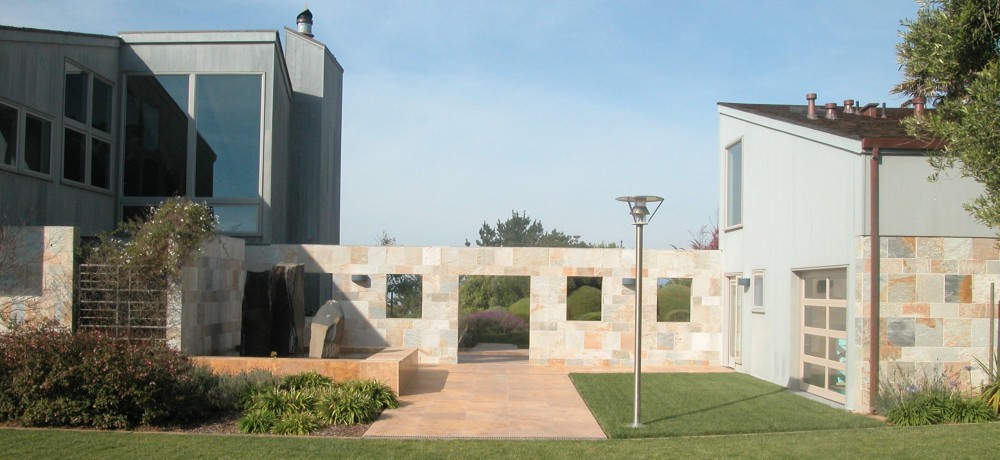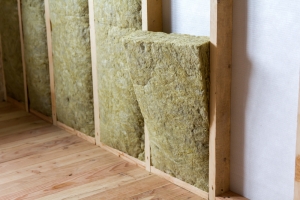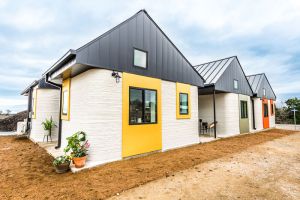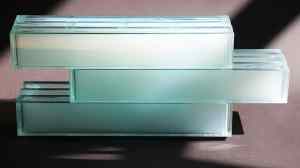
Mjøstårnet is the tallest mass timber building in Europe. Photo by Voll Arkitekter + Rikardo Foto
Mass timber construction has revolutionized the architectural landscape, offering a sustainable and innovative alternative to traditional building materials. Engineered wood products like cross-laminated timber (CLT) and glulam beams have paved the way for skyscrapers and complex structures that were once thought impossible with wood alone. This article discusses the top 20 tallest mass timber buildings globally, exploring their design, engineering feats, and environmental impact. From the iconic Ascent MKE in Milwaukee to the groundbreaking HOAS Tuuliniitty in Finland, each building showcases the beauty, strength, and versatility of mass timber, ushering in a new era of eco-friendly architecture. Continue reading

 When it comes to choosing between plywood and OSB (Oriented Strand Board), builders often grapple with the issue of durability. OSB, with its appearance and composition resembling a collection of wood chips glued together, has faced criticism centered on its potential to fall apart. This critique echoes a familiar sentiment, reminiscent of the early days when plywood faced similar skepticism due to delamination issues. However, advancements in technology and manufacturing processes have reshaped perceptions of both materials.
When it comes to choosing between plywood and OSB (Oriented Strand Board), builders often grapple with the issue of durability. OSB, with its appearance and composition resembling a collection of wood chips glued together, has faced criticism centered on its potential to fall apart. This critique echoes a familiar sentiment, reminiscent of the early days when plywood faced similar skepticism due to delamination issues. However, advancements in technology and manufacturing processes have reshaped perceptions of both materials.  In the bustling rhythm of urban life, where the symphony of city sounds orchestrates our daily routines, the concept of acoustic insulation emerges as a crucial element in architectural design. Acoustic insulation, also known as soundproofing, plays a vital role in creating spaces that offer tranquility, privacy, and enhanced well-being for occupants. In this article, we delve into the significance of acoustic insulation, the various forms of sound propagation, and the best materials available for effective soundproofing.
In the bustling rhythm of urban life, where the symphony of city sounds orchestrates our daily routines, the concept of acoustic insulation emerges as a crucial element in architectural design. Acoustic insulation, also known as soundproofing, plays a vital role in creating spaces that offer tranquility, privacy, and enhanced well-being for occupants. In this article, we delve into the significance of acoustic insulation, the various forms of sound propagation, and the best materials available for effective soundproofing.  With the global housing deficit looming as a monumental challenge, the emergence of 3D printing technology in construction offers a beacon of hope. From the United Arab Republic to the heartland of the United States, innovative companies are harnessing the power of 3D printing to revolutionize housing projects, promising faster construction times and reduced costs. This transformative technology has captured the imagination of affordable housing advocates worldwide, presenting a potential game-changer in addressing the housing crisis. However, the realization of its full potential hinges on overcoming various hurdles, from regulatory adaptations to investment in infrastructure and reimagining the housing value chain. As we embark on this journey toward sustainable and inclusive housing solutions, it becomes evident that 3D printing is just the tip of the iceberg in the broader innovation required to tackle this pressing global issue.
With the global housing deficit looming as a monumental challenge, the emergence of 3D printing technology in construction offers a beacon of hope. From the United Arab Republic to the heartland of the United States, innovative companies are harnessing the power of 3D printing to revolutionize housing projects, promising faster construction times and reduced costs. This transformative technology has captured the imagination of affordable housing advocates worldwide, presenting a potential game-changer in addressing the housing crisis. However, the realization of its full potential hinges on overcoming various hurdles, from regulatory adaptations to investment in infrastructure and reimagining the housing value chain. As we embark on this journey toward sustainable and inclusive housing solutions, it becomes evident that 3D printing is just the tip of the iceberg in the broader innovation required to tackle this pressing global issue.  Insulating concrete form or insulated concrete form (ICF) is a system of formwork for reinforced concrete usually made with a rigid thermal insulation that stays in place as a permanent interior and exterior substrate for walls, floors, and roofs. The forms are interlocking modular units that are dry-stacked (without mortar) and filled with concrete. The units lock together somewhat like Lego bricks and create a form for the structural walls or floors of a building. ICF construction has become commonplace for both low rise commercial and high performance residential construction as more stringent energy efficiency and natural disaster resistant building codes are adopted.
Insulating concrete form or insulated concrete form (ICF) is a system of formwork for reinforced concrete usually made with a rigid thermal insulation that stays in place as a permanent interior and exterior substrate for walls, floors, and roofs. The forms are interlocking modular units that are dry-stacked (without mortar) and filled with concrete. The units lock together somewhat like Lego bricks and create a form for the structural walls or floors of a building. ICF construction has become commonplace for both low rise commercial and high performance residential construction as more stringent energy efficiency and natural disaster resistant building codes are adopted.  The construction industry is undergoing a transformative phase thanks to breakthroughs in material science. Advanced construction materials are revolutionizing the way we build, offering enhanced durability, sustainability, and efficiency. From self-healing concrete to smart materials, the possibilities seem limitless. In this article we explore four trending applications of advanced materials science in the construction industry, namely self-healing concrete, so-called “smart materials”, nanotechnology, and high-performance composites.
The construction industry is undergoing a transformative phase thanks to breakthroughs in material science. Advanced construction materials are revolutionizing the way we build, offering enhanced durability, sustainability, and efficiency. From self-healing concrete to smart materials, the possibilities seem limitless. In this article we explore four trending applications of advanced materials science in the construction industry, namely self-healing concrete, so-called “smart materials”, nanotechnology, and high-performance composites.  The exterior of a home serves as the first line of defense against the elements, offering protection and aesthetic appeal. Fiber cement siding, a versatile and durable building material, has gained popularity for its remarkable attributes. In this comprehensive guide, we will delve into the history, manufacturing process, installation, durability, fire resistance, safety considerations, advantages, disadvantages, and alternative materials associated with fiber cement siding.
The exterior of a home serves as the first line of defense against the elements, offering protection and aesthetic appeal. Fiber cement siding, a versatile and durable building material, has gained popularity for its remarkable attributes. In this comprehensive guide, we will delve into the history, manufacturing process, installation, durability, fire resistance, safety considerations, advantages, disadvantages, and alternative materials associated with fiber cement siding.  In the ever-evolving world of architecture and construction, new materials continually emerge, pushing the boundaries of design and performance. One such innovation is the aerogel glass block, a remarkable material that combines the transparency of glass with the extraordinary insulating properties of aerogels. In this article, we will delve into the fascinating world of aerogel glass blocks, exploring how they are made, their unique physical characteristics, and the advantages they offer as a building material.
In the ever-evolving world of architecture and construction, new materials continually emerge, pushing the boundaries of design and performance. One such innovation is the aerogel glass block, a remarkable material that combines the transparency of glass with the extraordinary insulating properties of aerogels. In this article, we will delve into the fascinating world of aerogel glass blocks, exploring how they are made, their unique physical characteristics, and the advantages they offer as a building material.  Wood has been a staple material in construction for centuries, offering natural beauty, sustainability, and versatility. Over the years, wood-frame construction has witnessed significant innovations that have revolutionized the way we build structures. These innovations not only enhance the structural integrity and safety of wooden buildings but also contribute to sustainability and energy efficiency. In this article, we will delve into 12 cutting-edge innovations that are shaping the future of wood-frame construction.
Wood has been a staple material in construction for centuries, offering natural beauty, sustainability, and versatility. Over the years, wood-frame construction has witnessed significant innovations that have revolutionized the way we build structures. These innovations not only enhance the structural integrity and safety of wooden buildings but also contribute to sustainability and energy efficiency. In this article, we will delve into 12 cutting-edge innovations that are shaping the future of wood-frame construction.  Swedish urban developer Atrium Ljungberg has initiated Stockholm Wood City, anticipated to be the world’s largest urban wooden construction project. The project, to be built in Sickla in south-central Stockholm, will extend over 62 acres. The project’s developers indicate that through innovative design and a strong collaborative effort with stakeholders their intent is to create a vibrant urban environment utilizing a mix of workplaces, housing, restaurants and shops. Their goal is to set a new standard for sustainable construction.
Swedish urban developer Atrium Ljungberg has initiated Stockholm Wood City, anticipated to be the world’s largest urban wooden construction project. The project, to be built in Sickla in south-central Stockholm, will extend over 62 acres. The project’s developers indicate that through innovative design and a strong collaborative effort with stakeholders their intent is to create a vibrant urban environment utilizing a mix of workplaces, housing, restaurants and shops. Their goal is to set a new standard for sustainable construction.